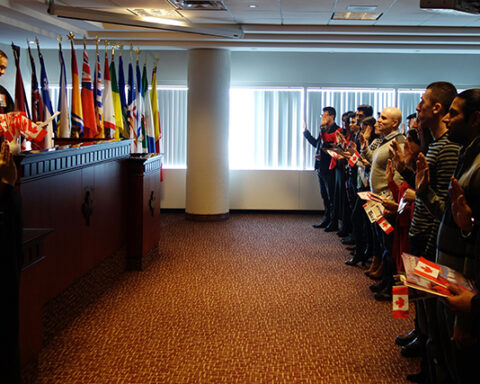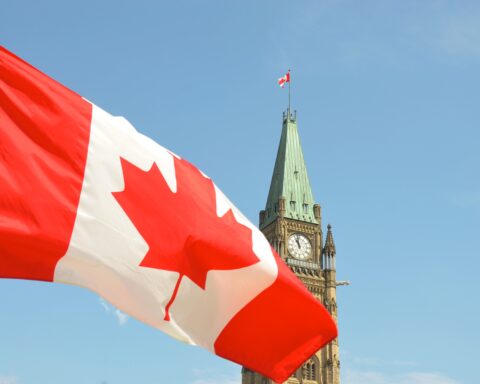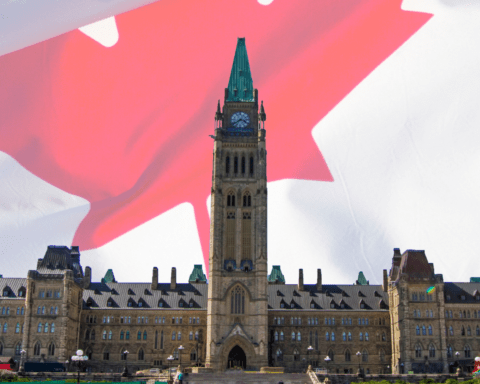Six years into office and on the first anniversary of forming a majority government in Ottawa, the Conservatives see a very different Canada from the one bequeathed to them by the Liberals. Of course, there have been “incremental” shifts in economic and social policy, but nowhere have the changes been more far-reaching than in the area of immigration.
There is little in common between immigration in 2012 and the one practised before 2006. The previous policy was dictated largely by interest groups and the desire to keep winning immigrant votes, based on the fact that the Liberals had literally invented multiculturalism and ensured that Canada continued to bring in the more immigrants per capita than any other country in the world, although the numbers fell far short of the 1% of national population that they had set for themselves. It resulted in a lost generation of immigrants who have not quite found their footing in this their new homeland.
Six years hence, multiculturalism has been largely discredited the world over, thanks in no small part to a government in Ottawa that barely pays lip service to this quintessential Canadian invention. In its place has come a greater sense of nationalism, unabashed flag-waving, a reaffirmation of our status as a Dominion under the Queen, and an emphasis on “being Canadian,” although that itself remains an abstraction.
Equally significantly, the party that was perceived as being anti-immigration when it took office has not only maintained the intake of newcomers – even in tough, recessionary times – but also persuaded an increasing number of them to vote Conservative, enough to win immigrant-rich ridings in the vicinity of Toronto and Vancouver. Pundits have speculated that this switch in voting preference may have contributed to the Tory majority of May 2, 2011.
Looking back, one can see a few definite trends – among them, a tougher scrutiny of refugee applications and a willingness to intercept “boat people,” a zero-tolerance policy towards those who game the immigration system, a preference for those who are fluent in English or French (preferably both), a lower priority to family immigration, and, generally, an immigration and asylum policy that focuses on Canada’s national interest rather than our humanitarian obligations toward those seeking to come here. The recent elimination of nearly 300,000 from the applications backlog was heartless, but typical of this new tough-love approach.
All of these are common sense changes and hardly ideological. The most dramatic change, however, has been in the way the country recruits its “economic” migrants who form the bulk of the quarter-million newcomers who arrive every year. The points system first introduced in 1967 was based on a “human capital” model, on the assumption that an individual with a combination of higher education, fluency in one of the official languages, relative youth and considerable work experience, would inevitably make a good citizen. It was long-sighted.
Immigration Minister Jason Kenney – already one of Canada’s longest serving immigration ministers – has opted to alter the system to privilege those who can meet immediate job market requirements. Instead of recruiting those who have what it takes to be good Canadian citizens of tomorrow, we are going to be bringing in people who can instantly fill our skills gap and meet our job market requirements. That is a huge shift. As Prof. Arthur Sweetman of McMaster University puts it, “Employees are for the short term; citizens are forever.”
Of course, immigrants are bound to fill more of our labour market needs, whether as professionals or as tradespeople. Instead of having PhDs and neurosurgeons driving cabs, isn’t it much better to hire oil well technicians and roofers who are badly needed in today’s economy? There is merit in the rationale put out by the government, but Canadians should be aware that this emphasis on the job market rather than human capital has consequences that are not immediately apparent. Combined with a higher bar for language fluency, this change has the potential to alter our immigration intake quite dramatically, not just in terms of who gets in, but also the countries from which we recruit future Canadians.
Yet another major area of change in immigration policy has been giving greater powers to the provinces to select candidates suited to their needs. Here again, it makes a lot of sense given that provincial nominees have historically fared better than those who were brought in under the federal program run from Ottawa. Recent immigration policy changes also enable temporary foreign workers and post-secondary students to apply for immigration.
All of these changes have the potential to ensure better outcomes for New Canadians through immediate employment, a better match between their credentials and the jobs they are hired for, and, therefore, fewer distressing stories about immigrants who live below the poverty line and rely on social welfare programs. However, Canadians should be mindful of the implications that these changes engender. As Ratna Omidvar, president of the Maytree Foundation, points out, the higher weightage given to language skills will likely exclude applicants from traditional source nations such as China.
On the hot-button issue of foreign credential recognition, the Conservatives have little to show. In the face of strident and unrelenting obstruction from professional bodies in each province that are more interested in protecting the interests of current members than realizing the human potential of future Canadians, the government has made little headway in providing this entrée to newcomers. Hence, tragically, the very same credentials that make “economic” migrants good candidates to come to Canada make them un-employable in this country. An early sign of the headwinds came when the new Harper government was forced to change the name of its Foreign Credential Recognition Office to the Foreign Credential Referral Office within the Department of Citizenship and Immigration.
With so much of an emphasis on immigrants filling jobs, not very different from just-in-time supply chains, is there any doubt that wages are getting depressed at the lower end of the scale? While Canadians prefer to collect Employment Insurance, companies are hiring people from abroad in the very same regions where there is high unemployment. Mr. Kenny himself alluded to this paradox when he wondered why governments in Atlantic Canada were bringing in temporary workers even as their regions were reporting high unemployment.
On balance, though, the Conservatives have made improvements to the immigration system that will work better for both Canada and newcomers. These changes will also perhaps ensure that Canadians will never hear the sort of inflamed rhetoric that has swept much of western Europe, including the presidential elections in France where the followers of Marine Le Pen’s party that is avowedly anti-immigration may hold the balance of power in the run-off vote.
All Canadians want immigrants to succeed and it alarms us when we read that a large percentage of new arrivals abandon this country within a few years, largely because they cannot find work that meets their expectations or one that fulfils their ambitions. Statistics Canada reported in a 2006 study that up to a third of all immigrant men between 25 and 45 years – in their prime years – were leaving Canada for good within 20 years of arrival, half of them within a year of becoming permanent residents. Clearly, that is tragic, both for the immigrant and this country. Anything the government can do to improve the prospects for immigrants is a step in the right direction, but we must know that there’s a big difference between a good employee and a good citizen. We need both.




